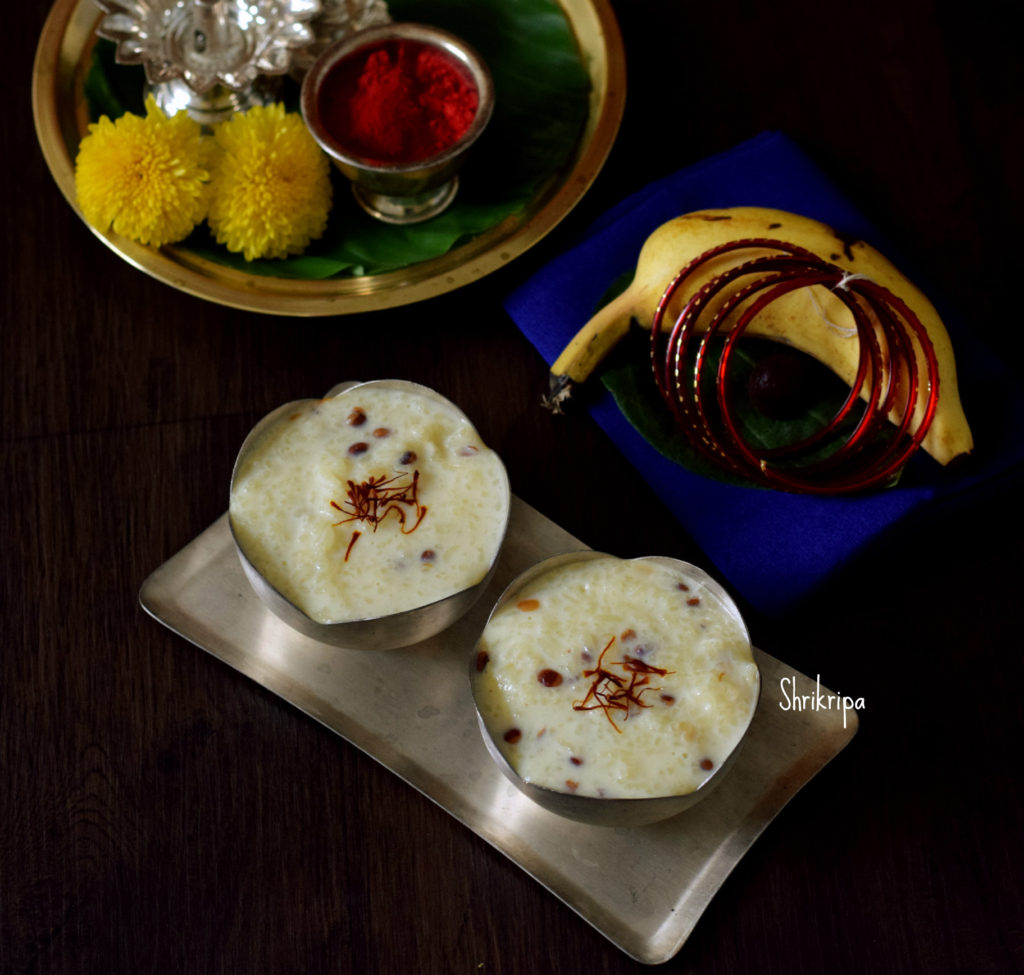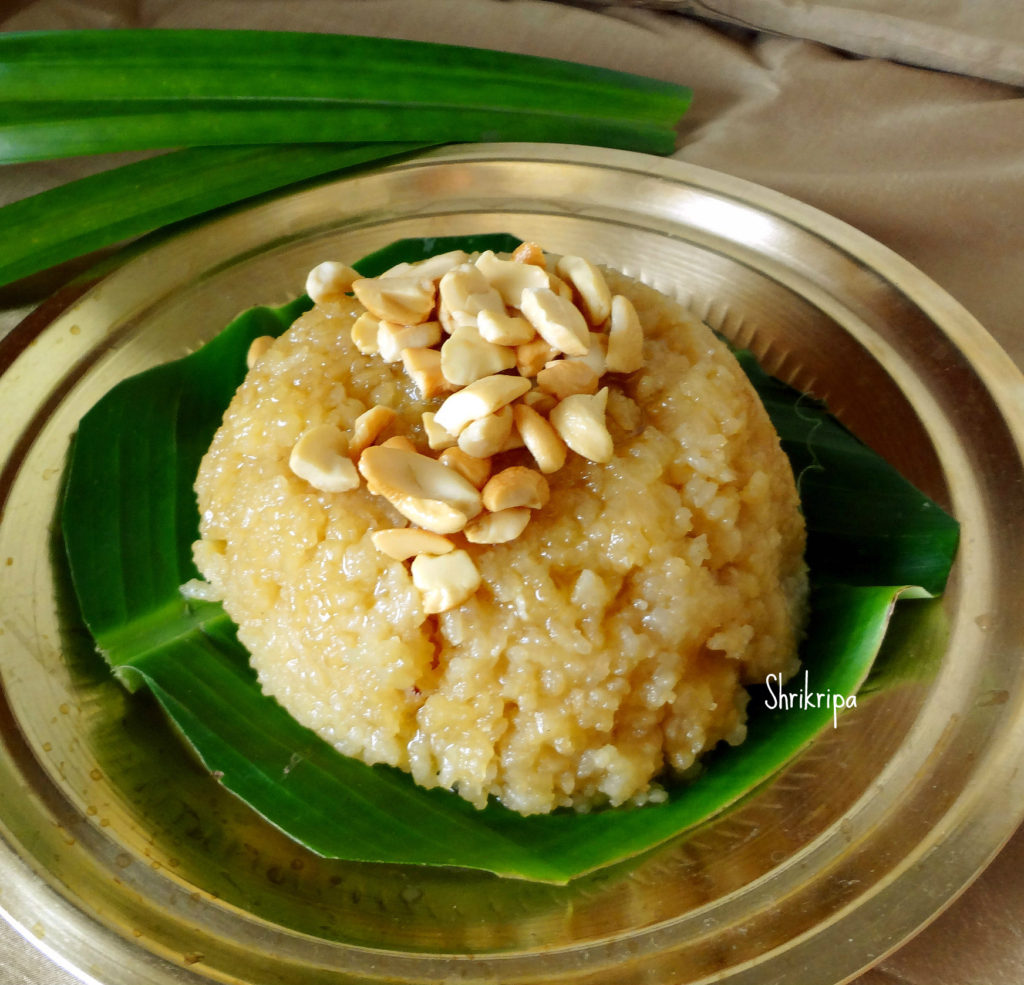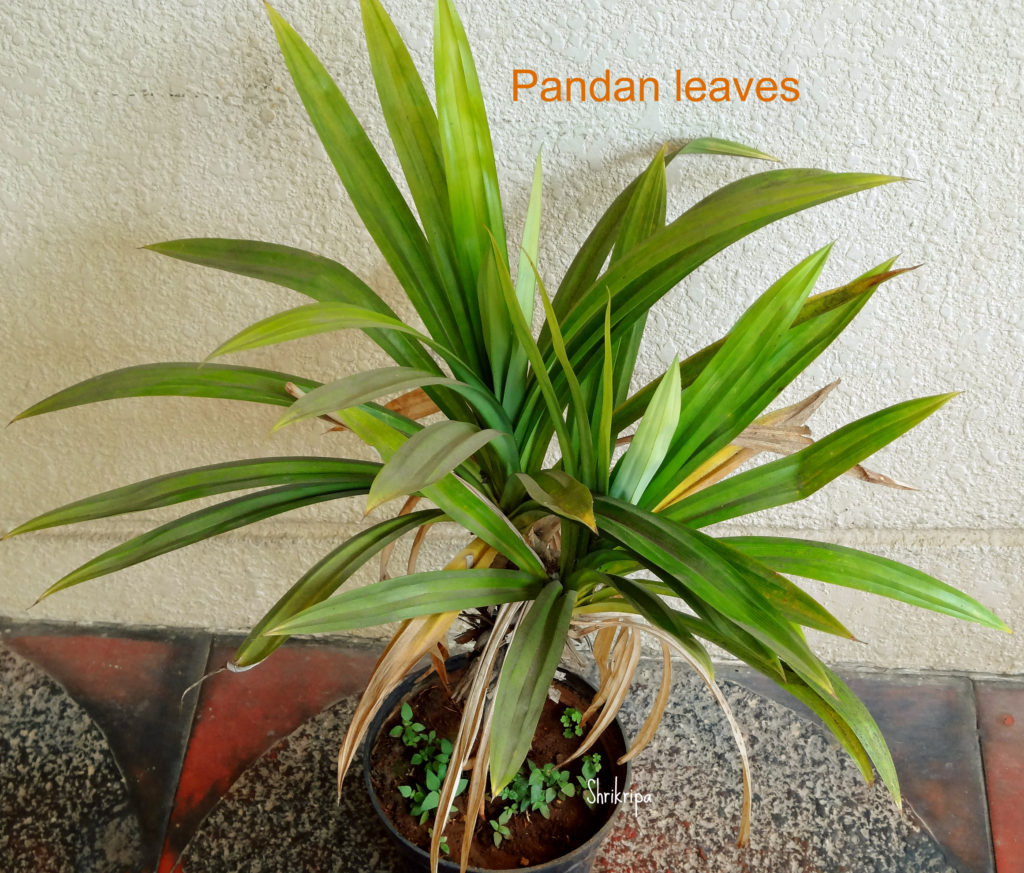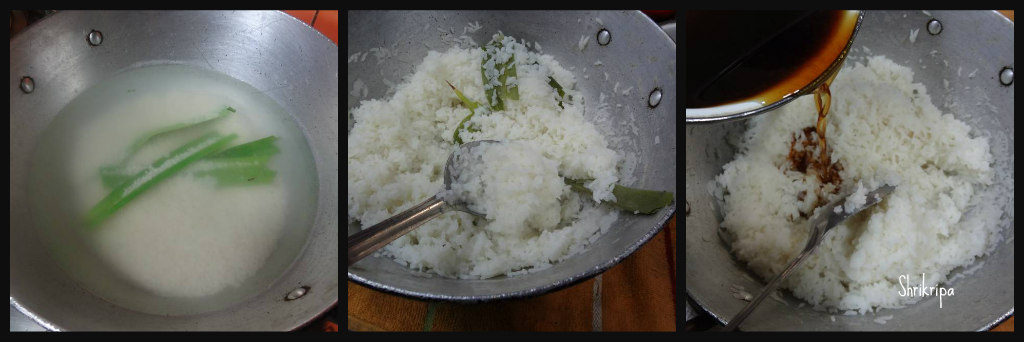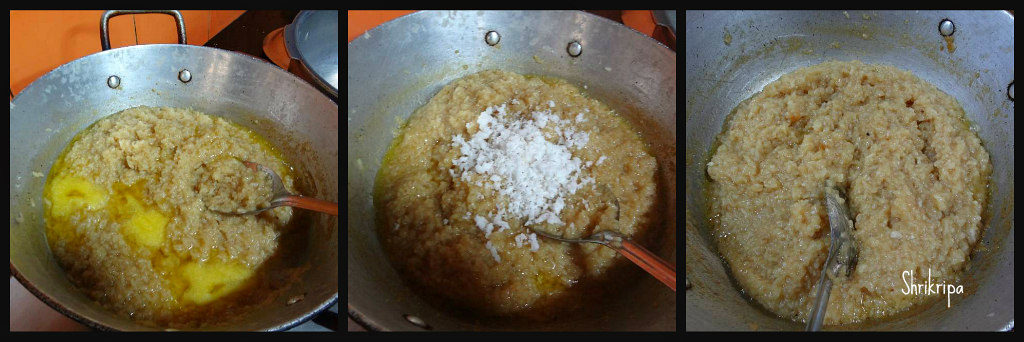Rice kheer or Paramanna is an integral part of any festivities in many parts of India. Every region has its own method or style. Usage of ingredients would differ according to the region. Such as the addition of plain milk or coconut milk. Usage of Jaggery or sugar. So, in west Bengal, they use date palm jaggery, which is known as Nolen Gur, which is available only during the wintertime; they make a lot of delicacies by using this special jaggery. It ranges from Nolen Gur Payesh, Nolen Gur Rasgulla, Nolen Gur Sandesh are the few. I wanted to try this out in my cooking and bought it online.
They usually use plain tiny grain rice or dried rice-shaped vermicelli, which is known as Chushi pithe. Chushi pithe is nothing but handmade Rice vermicelli. In Mangalore, we make rice noodles known as Halittu or Paradi and use them in a Payasa/ kheer, and we usually use coconut milk. So, I tried my regional method and proceeded. It tasted divine!! Usage of coconut milk and taste of the palm jaggery was the best decision, and it was very rustic and flavourful in taste.
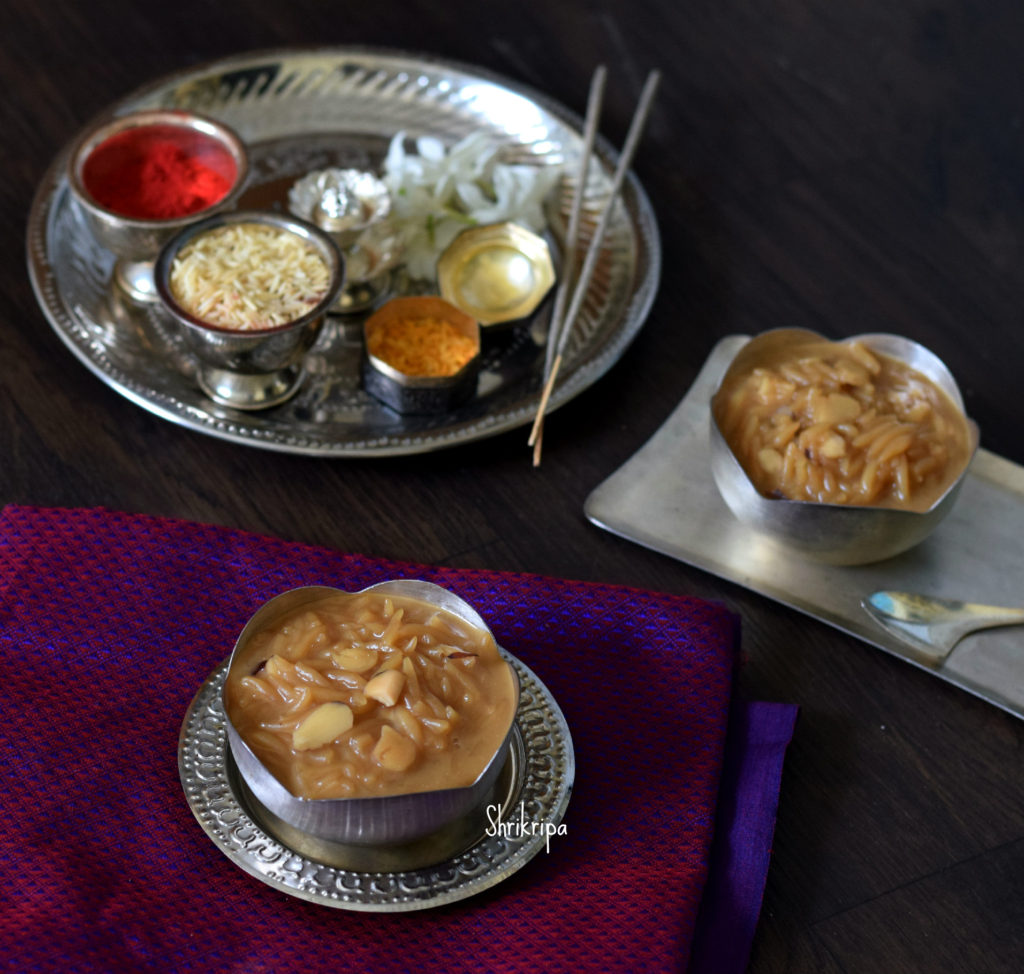
Ingredients:
Chushi Pithe/handmade rice vermicelli – 200 grams (you can use small grain rice as well)
Almond or Cashew – ½ cup (slivered)
Nolen gur – 300 grams (used Patali gur)
Coconut milk – 200 grams
Cardamom powder – 1 tsp
Ghee – 1 tsp (vegans can skip this)
Method:
-Take one thick bottomed vessel, add ghee and fry almond and rice vermicelli (Chushi pithe) or if you are using plain rice.

-Add around one litre of water and cook until rice cooks perfectly. Whenever it’s needed, add extra water little by little and cook.

-Now, add jaggery of your choice, boil until it smells divine and the aroma spreads. Here, the raw smell of the jaggery should vanish.

-Lastly, add one tetra pack of coconut milk, give one boil. Garnish with cardamom powder and mix.
NOTE:
-If you are using fresh homemade coconut milk, extract three times, preserve thick (1st extract) and add at the end.
-thin coconut milk of 2nd and 3rd extracts can be added while boiling or cooking rice vermicelli.

